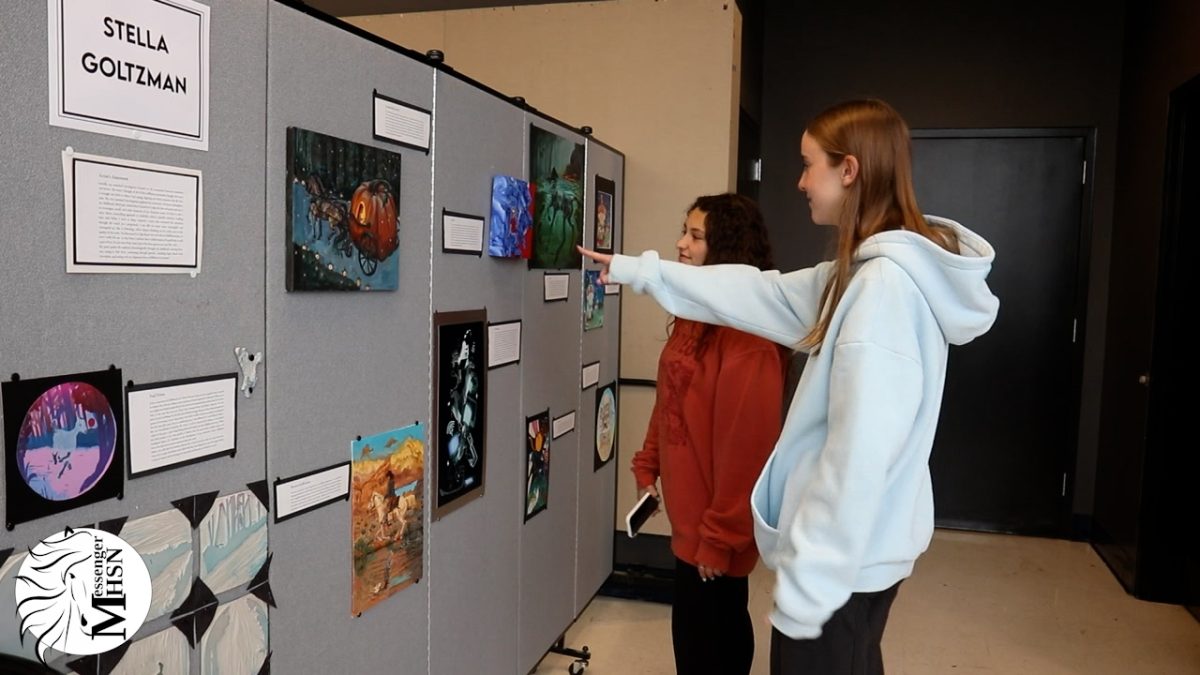Political questions: answered
October 20, 2016
WHY IS AMERICAN VOTER TURNOUT SO LOW?
The United States was built on the principles of democracy and freedom. Yet, for a country as proud of its democracy and as developed as it is, it’s voter turnout during presidential elections ranks on the low end of developed countries.
In “A Different Democracy: American Government in a 31-Country Perspective,” a text that compares the governments of 31 nations, the United States was ranked 29 out of 31 for voter turnout, which averages at 57 percent in the United States.
Eric Black, writer for the MinnPost, wrote a series of articles that delved into the topic of voter turnout. One focused on several ways that the circumstances behind voting barred or discouraged groups of people from voting.
One reason is difficulty of registration. In other countries where registration is automatic, voter turnout tends to be higher. In the U.S., it’s the citizen’s responsibility to get registered, making the voting process a more complicated two-step process.
Another reason is the inconvenient practice of having elections on a Tuesday. No other democracies do this, and it is not specified in the Constitution. It was a tradition most likely started to accommodate the work schedules of farmers, but it is impractical in modern times as it is in the middle of a work week.
Black also said even the option of making voting optional lowers voter turnout in the US. In countries such as Australia, where voting is compulsory and citizens are fined $20 if they do not provide a valid reason for not voting, voter turnout is much higher, reaching about 78 percent.
Assistant Professor of the Harris School of Public Policy at the University of Chicago Dr. Anthony Fowler conducted several studies on voter turnout as a part of his doctoral dissertation at Harvard. He decided to study voter turnout because it was an issue he saw with no easy solution, making it worthy of further investigation.
Fowler attributes the reasoning behind the people who don’t vote to a perceived unlikelihood that their vote will be pivotal in a presidential race.
“Voter turnout and political participation in general is a really interesting collective action problem,” Dr. Fowler said. “Imagine we’re in a large group of people with similar political interests. We’d all be better off if we could commit to turning out, but it’s not rational for any one of us to do so because the chances that an individual vote is pivotal in a large election are essentially zero.”
Because of this reasoning, he doesn’t judge those who don’t vote as the act of voting would be irrational unless the individual drove utility from the act of voting itself, Dr. Fowler said.
However the act of voting is still important, especially if those who vote are unrepresentative of the rest of the population, producing election results and public policy that differ significantly from the preferences of the public, Dr. Fowler said.
In his studies, conducted by gathering large amounts of historical data and then using statistical programs to analyze them, he researched ways to increase voter turnout in presidential elections.
One study suggested that compulsory voting is a worthy idea to implement in order to promote voter turnout.
“Compulsory voting is not a crazy idea,” Dr. Fowler said. “It works in other countries, and financial incentives are the way that we typically solve collective action problems.”
The other method is to have more concurrent, rather than off-cycle, elections. Dr. Fowler said turnout in a mayoral race, congressional race or school board election is a lot higher when those elections coincide with presidential elections.
As far as getting out the vote in the younger demographic, Dr. Fowler said it was really difficult. As a group of people who are a mobile population, it’s harder for them to register, stay on the rolls and know their polling place, Dr. Fowler said.
WHY ARE DEMOCRATS BLUE AND REPUBLICANS RED?
It’s 1972. Bell-bottoms are at the height of fashion. Richard Nixon is in office, and Rod Stewart is in his prime. CBS airs the first televised color election map, using blue for the states that Republican Richard Nixon won and red for the states that Democrat George McGovern won.
But wait, this means that solidly Republican states, such as Texas and Mississippi, were colored blue that year.
During the 1970s and 1980s, news outlets used a number of color combinations for election night coverage. In 1976, ABC used blue for Democrats and yellow for Republicans. For NBC that year, it was red for Democrats and blue for Republicans.
So, how did blue come to mean Democrat and red come to mean Republican?
The terms red state and blue state emerged as commonly-known political concepts during the close election of 2000 between President George W. Bush and Al Gore. By then, the three major news networks—NBC, CBS and ABC—had all been using red for Republicans and blue for Democrats for several election cycles.
“It was an easier way of referring to Bush and Gore states in the weeks after the 2000 election,” Philip Bump, reporter for The Washington Post, said. “A way of identifying two political worldviews in a very fragmented country.”
In 2000, David Lettermen even joked that George W. Bush should serve as president for the red states, with Al Gore as president for the blue states.
As to why these two specific colors are used, Bump said he guesses it boils down to two things: readability of graphics and legacy of left- and right-wing politics. Red and blue can be easily distinguished from each other on an election map, and they have both been associated with conservative and liberal politics for some time.
However, in Europe people tend to correlate red with left-wing politics as it’s typically associated with extreme socialism, Scott Szevery, social studies teacher, said. Blue is identified with more conservative ideals when it comes to the upper-crust and bluebloods.
“It’s funny that in America we’ve done it in our own unique way, as we always do,” Szevery said. “I don’t really know that Americans care at all about European traditions. We’ve always kind of made it up as we’ve gone along, and this is just another case of that.”
Anna Mae, freshman, said the specific colors associated with each party can impact the way people think about Democrats and Republicans.
She said people tend to associate red with danger, passion or anger, whereas blue is seen as more cool and passive.
“Personally, I think a purple party would be really cool,” Mae said.
WHERE DID THE PARTY SYMBOLS COME FROM?
The day is Jan. 14, 1870 and Harper’s Weekly publishes the iconic cartoon “A Live Jackass Kicking a Dead Lion.” Thomas Nast, the cartoonist, displays the Democratic party as a jackass, or donkey, as a way to disparage the Democrats.
Four years later, Nast strikes again with the use of an elephant to symbolize the Republican Party in the cartoon “The Third-Term Panic.” Nast was fiercely loyal Republican and used the strong and steady elephant as a symbol for the Republican Party.
But how did those animals end up becoming the symbol for the parties?
For the Democratic party, the infamous donkey was never officially accepted by the party itself; however, Nast’s cartoons popularity and his continued use of the donkey set in stone the tie of Democrats to jackasses. Republicans, though, embraced the elephant and adopted it as their official symbol.
Republicans were quick to use the elephant due to its symbolic use in the phrase “seeing the elephant” as an expression used by soldiers to mean experiencing combat during the Civil War. Doing so would represent the party’s nationalism and dedication to fight what they believe in, as they had done in the Civil War.
Elephants have this reputation of being smart, of forming relationships and of showing their emotions about certain actions, whereas donkeys tend to be seen as more stubborn and not as effective, Amy Doyle, history teacher, said.
In the end, the popularity boils down to one man: Thomas Nast. Nast was considered a master of political cartoons and the father of the modern medium. Nast was the creator of the animal symbols, but also the man who popularized the image of the modern “Santa Claus.”
“His messages were very poignant in terms of criticizing political machines or Tammany Hall and other political institutions like slavery and equal rights for African Americans,” Doyle said.
In a time when much of the United States’ population was illiterate, political cartoons were also the main way to share a message and convey a point to people who couldn’t read.
Rather than needing to read a paragraph of writing, a political cartoon can convey the same message without requiring any reading. It’s almost simpler and can be as equally as complex without text, Devin Haas, junior, said.
“At this point, I doubt that many people know the full history behind the origin of these symbols and I don’t think that a party symbol can change the way that anybody votes,” Haas said.


















